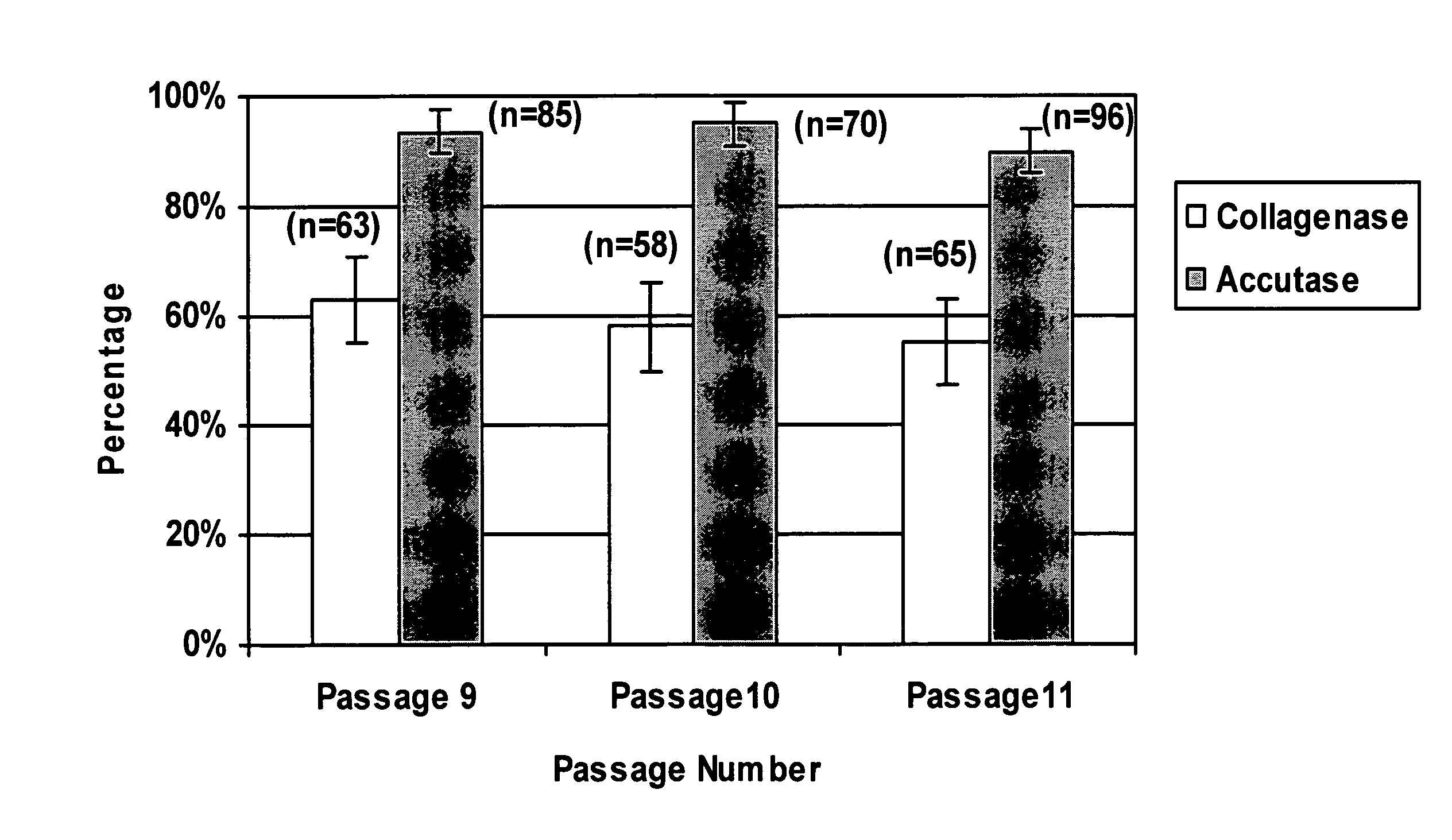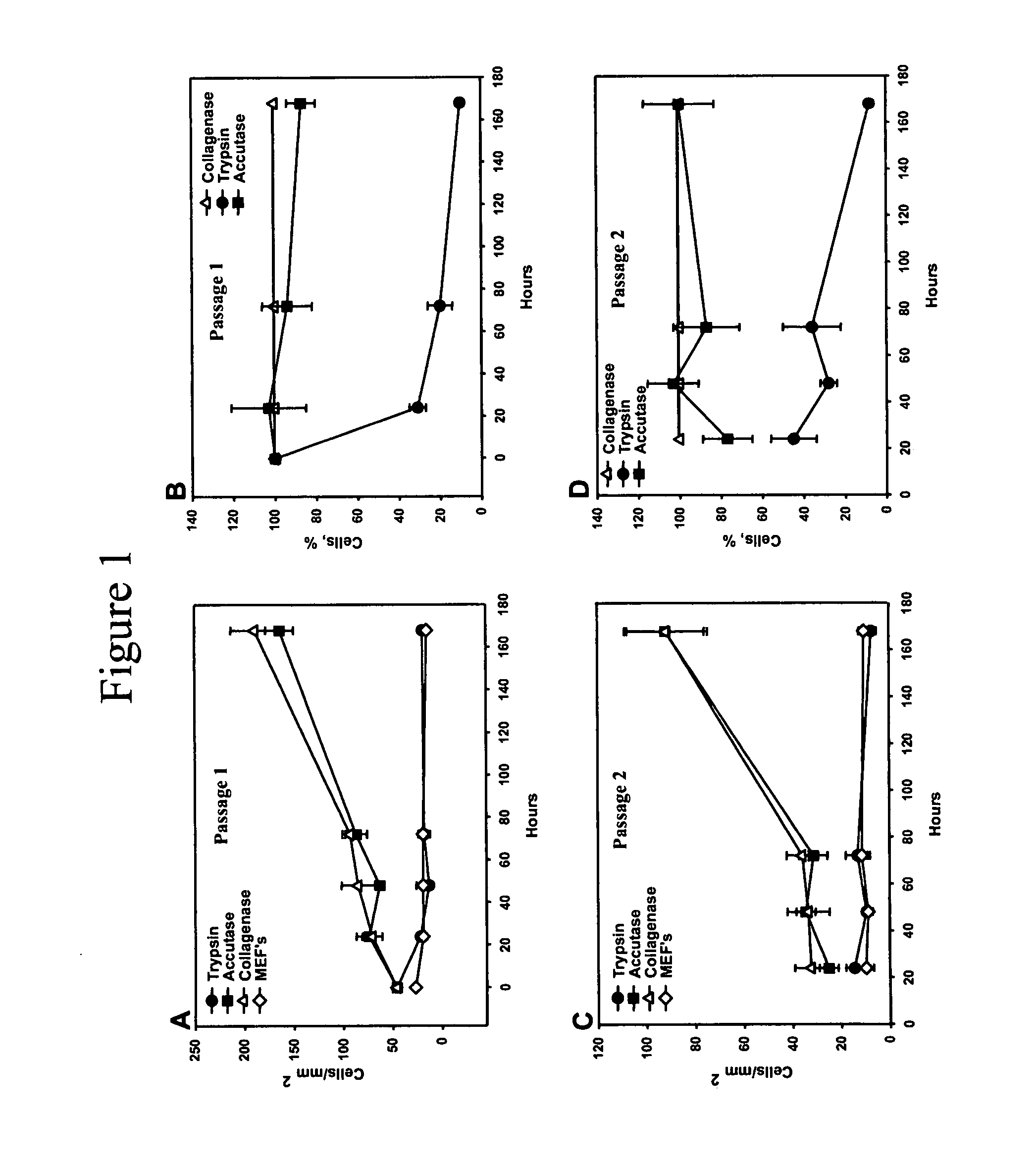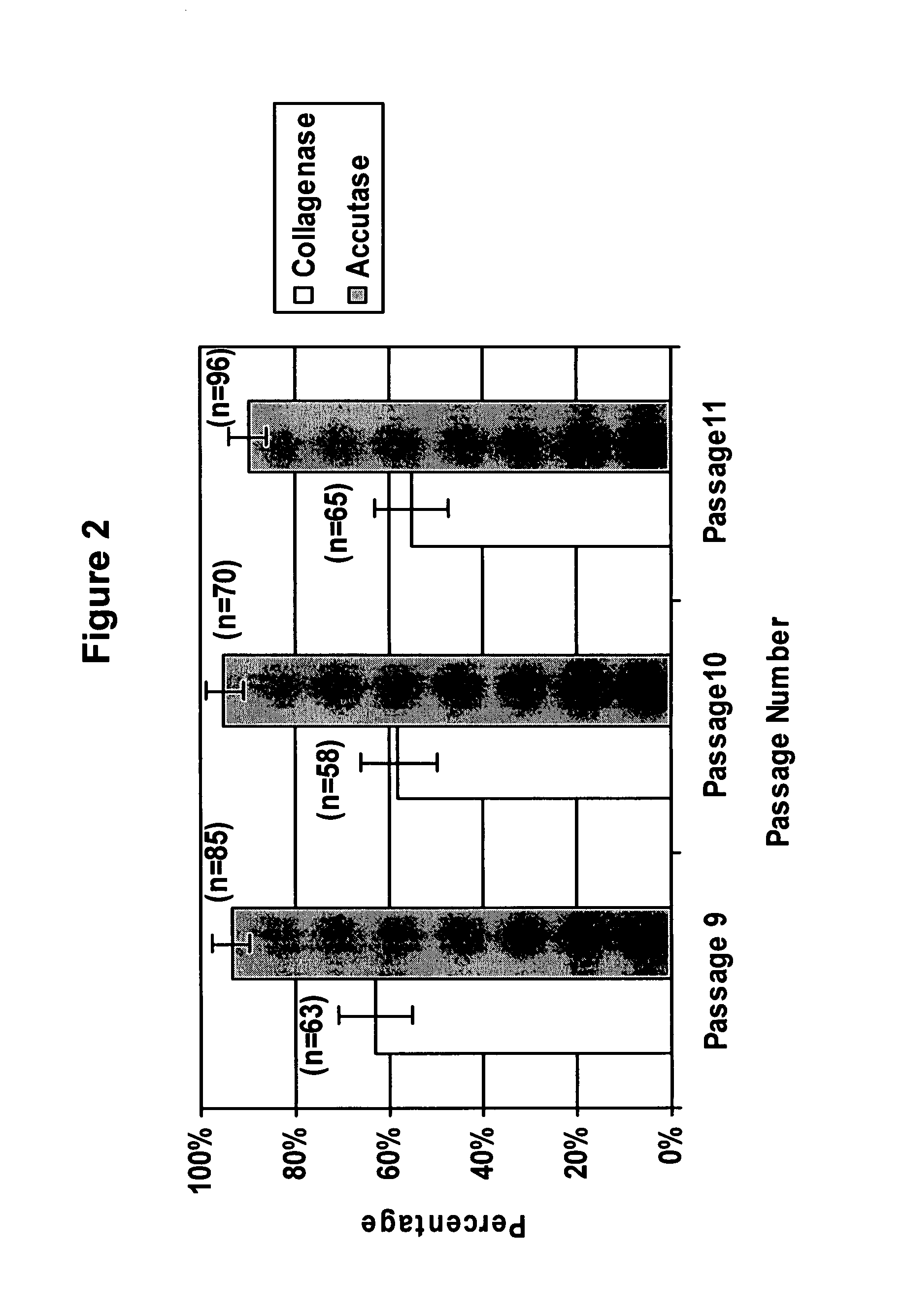Methods for culture and production of single cell populations of human embryonic stem cells
a technology of embryonic stem cells and single cell populations, which is applied in the field of culture and production of single cell populations of human embryonic stem cells, can solve the problems of estimating the number, unable to effectively use cell sorting methods on single cells, and undesirable transplanting aggregates
- Summary
- Abstract
- Description
- Claims
- Application Information
AI Technical Summary
Benefits of technology
Problems solved by technology
Method used
Image
Examples
example 1
[0071] Human Embryonic Stem cells (hESCs) are pluripotent cells derived from the inner cell mass of human embryos at the preimplantation stage that are capable of in vitro differentiation into virtually every cell type found in the adult body (Thomson et al., Science 282:1145-1147, 1998). hESCs hold great promise for cell-based therapies and drug screening applications. However, growing and processing large quantities of undifferentiated hESCs is a challenging task.
[0072] Conventionally, hESCs are passaged as clusters, which can limit their growth efficiency and use in downstream applications. Initially, hESCs were isolated and passaged by mechanical dissociation (Thomson et al., Science 282:1145-1147, 1998). Since the development of this technique, several variations for the derivation and maintenance of hESC were reported (Amit et al., Biol. Reprod. 70:837-845, 2004; Klimanskaya et al., Lancet 365, 1636-1641, 2005; Stojkovic et al., Stem Cells 23:306-314, 2005; Xu et al., Nat. Bi...
PUM
| Property | Measurement | Unit |
|---|---|---|
| temperature | aaaaa | aaaaa |
| morphology | aaaaa | aaaaa |
| adhesion | aaaaa | aaaaa |
Abstract
Description
Claims
Application Information
 Login to View More
Login to View More - R&D
- Intellectual Property
- Life Sciences
- Materials
- Tech Scout
- Unparalleled Data Quality
- Higher Quality Content
- 60% Fewer Hallucinations
Browse by: Latest US Patents, China's latest patents, Technical Efficacy Thesaurus, Application Domain, Technology Topic, Popular Technical Reports.
© 2025 PatSnap. All rights reserved.Legal|Privacy policy|Modern Slavery Act Transparency Statement|Sitemap|About US| Contact US: help@patsnap.com



